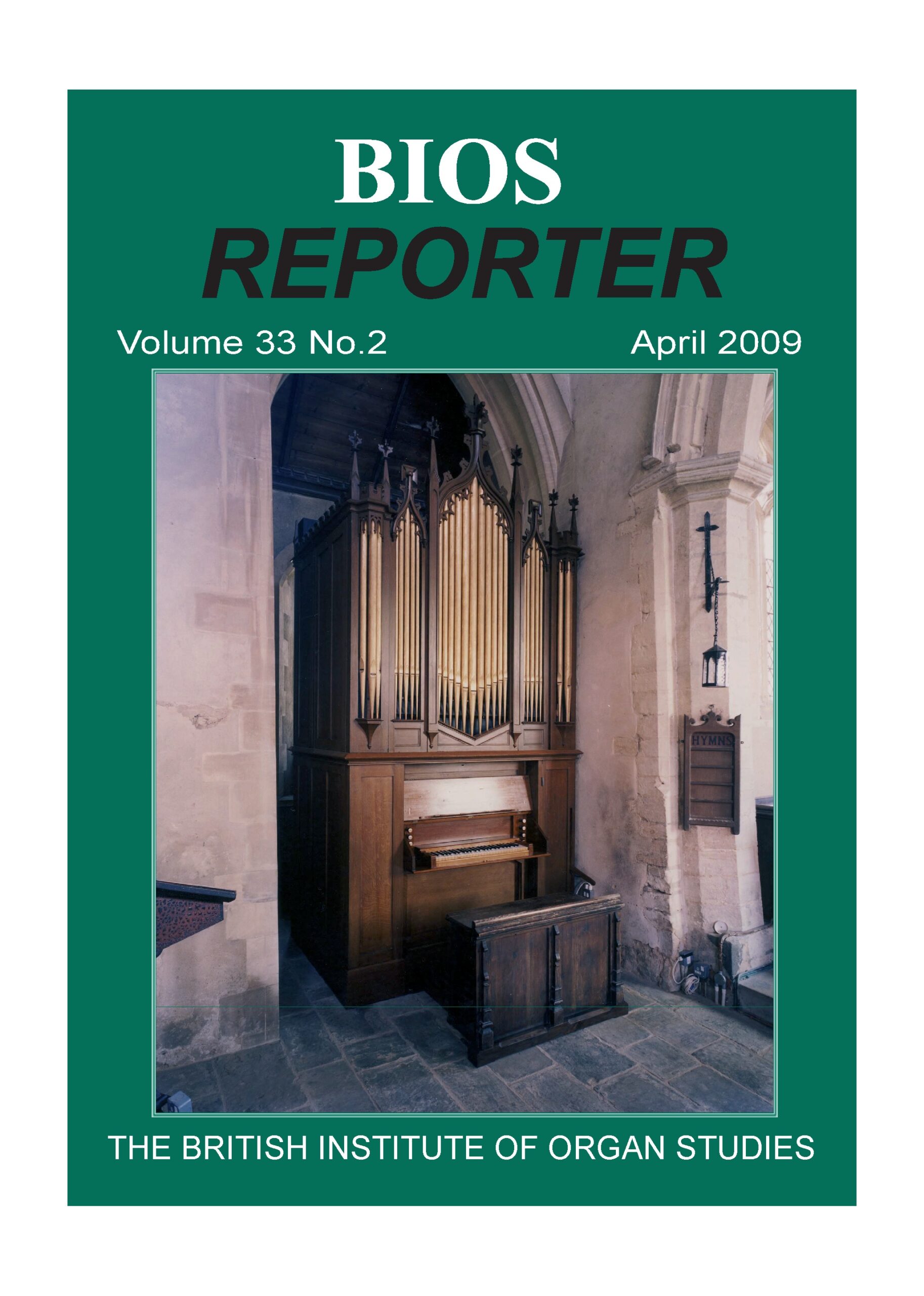Your basket is currently empty!
BIOS Reporter – Volume 33, No.2 – April 2009
In Andrew Freeman’s English Organ Cases (1921) there is a brief mention (p. 40) of a nineteenth-century account of the remains of an early organ at Wingfield church in Suffolk. Along with other historical glimpses of ancient organs, this appeared to be all that would ever be known about this fifteenth-century organ. And yet, here we are almost ninety years later with the not only an archaeologically-informed reconstruction of the Wingfield organ but also one from nearby Wetheringsett – both of which were based on surviving soundboards. Short of a complete instrument, the soundboard is probably the most significant single remnant capable of providing enough information to permit a credible reconstruction of an organ. Dominic Gwynn’s rediscovery of the half-burnt Wingfield soundboard in a church coffin house in 1995 was as astonishing as that of the milking shed door that was found to be the Wetheringsett soundboard some years earlier. These stories are very familiar to BIOS and you may be wondering why I am revisiting such well-trodden paths. Well, it is the story of the rediscovery, in the basement of the International Red Cross headquarters in Geneva, of (otherwise lost) records of millions of first world war soldiers that caused me to reflect on the possibilities of discovering even more new pieces of evidence that increase our knowledge of the history of the organ. The large number of paper archives, including military archives, that were lost or damaged during the blitz in London are more typical of the ease with which important information, and organs themselves of course, can be lost. However, one of the negative effects of the current electronic information age is that the preoccupation with the here-and-now, along with the rapidly changing technologies of computer programming and data storage, has perhaps dulled our desire to keep on searching for past records or artefacts that still exist…
